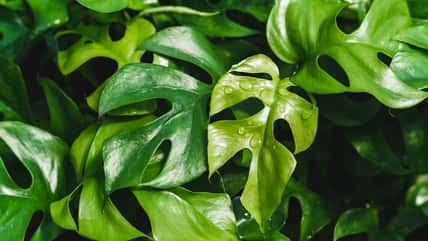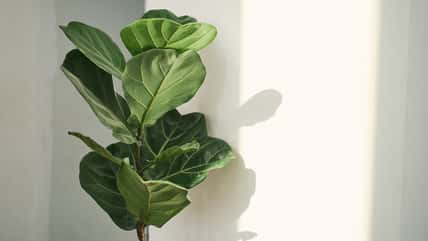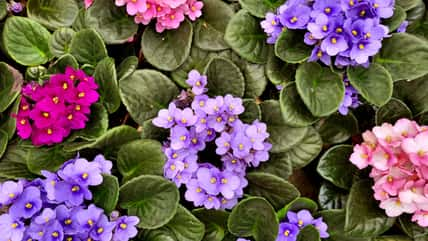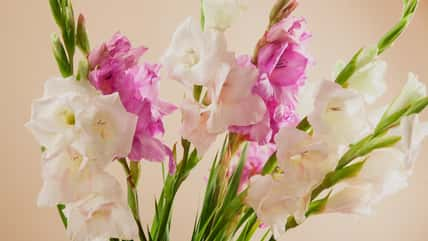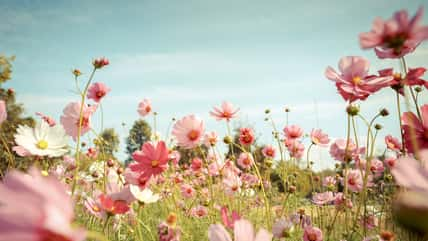Dog Owners Beware: These Are 10 Common Indoor And Outdoor Plants That Are Actually Harmful For Your Furry Friends

If you love both plants and pooches, then you know how much joy they each can bring into our lives. Sometimes, though, certain plants just don’t mix well with pups.
It’s vital to know what common garden blooms aren’t safe for our furry friends to protect the health of our pets.
So, here are 10 common indoor and outdoor plants that may look unassuming but actually can be harmful to dogs.
Sago Palm
First up is the Sago Palm– an exotic beauty that’s a stunner with its thick, shaggy trunk and long, feathery fronds. The only problem is that it’s super toxic to dogs.
Even a small nibble can lead to big problems like vomiting, diarrhea, and liver failure. So, be sure to keep these out of paw’s reach, or maybe go for a faux version instead.
Aloe Vera
Aloe Vera, our go-to for sunburns, has thick, fleshy leaves filled with soothing gel. However, for our four-legged friends, it’s a no-go.
If your dog gets a taste, you can expect some upset tummy and diarrhea. That’s why it’s best to keep these healing wonders on high shelves or in a pooch-free zone.
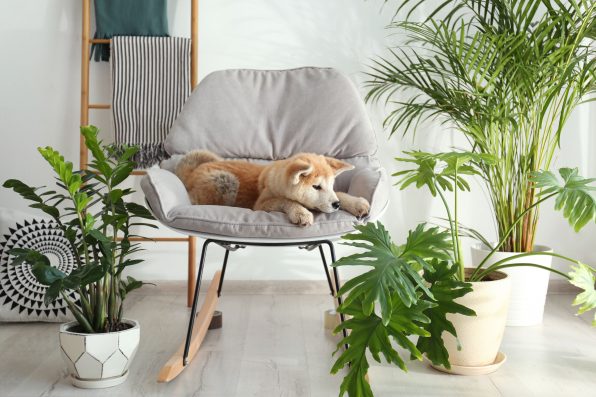
New Africa – stock.adobe.com – illustrative purposes only, not the actual dog
Azaleas
Azaleas are garden showstoppers with their bushy growth and spectacular flowers in pink, red, white, and purple.
But, if your dog munches on these, expect drooling, tummy trouble, and even a depressed nervous system.
You might want to fence off your azalea patch or keep a close eye on your pup as they explore the yard.
Tulips
Springtime is tulip time! These bulbs turn into gorgeous flowers, with smooth, cup-shaped blooms in almost every color.
But, the bulbs are a big problem for pups, causing mouth irritation and even heart issues. So, if you’ve got a digger, maybe plant these beauties in a dog-free zone.
Oleander
Oleander is a beauty with its full, leafy branches and clusters of flowers in shades of pink, red, or white.
But every part of it poses a danger to dogs, leading to scary symptoms like severe vomiting and heart troubles. So, if you’ve got a curious canine, it might be best to skip this one.
English Ivy
English Ivy is a classic vine that’s often seen elegantly climbing up walls. It’s got dark green, lobed leaves that are super pretty but not so pet-friendly.
Eating this can cause your pup to have abdominal pain and some messy side effects, which is why it’s best to keep this climber out of your dog’s climbing range!
Daffodils
Nothing says “Hello, spring!” quite like daffodils. Their bright yellow, trumpet-shaped flowers are a popular garden staple.
But, their bulbs are a hidden hazard, leading to serious issues like heart or breathing problems. Planting these where your furry friend can’t dig them up is a smart move.
Dieffenbachia (Dumb Cane)
Dieffenbachia, or Dumb Cane, is a popular houseplant with wide, variegated leaves in green, white, and sometimes yellow.
But if your dog decides to chew on this, it can cause a whole lot of oral irritation and breathing difficulty. It’s best to keep this plant in a room that’s off-limits to your dog.
Autumn Crocus
The Autumn Crocus is a fall bloomer with lovely flowers in shades of purple, pink, or white. But it’s seriously bad news for dogs, causing severe vomiting, bleeding, and damage to the liver and kidneys.
So, it’s important to know your crocuses because this one is a lot more dangerous than its spring cousin.
Lilies
Last but not least, lilies are a floral favorite with big, fragrant, trumpet-shaped blooms in many colors.
However, you have to be careful because some types– like Easter and Daylilies– are extremely toxic to dogs, leading to kidney failure.
So, if you’re a lily lover with a dog, you might want to reconsider your garden lineup.
Sign up for Chip Chick’s newsletter and get stories like this delivered to your inbox.
More About:Gardening
